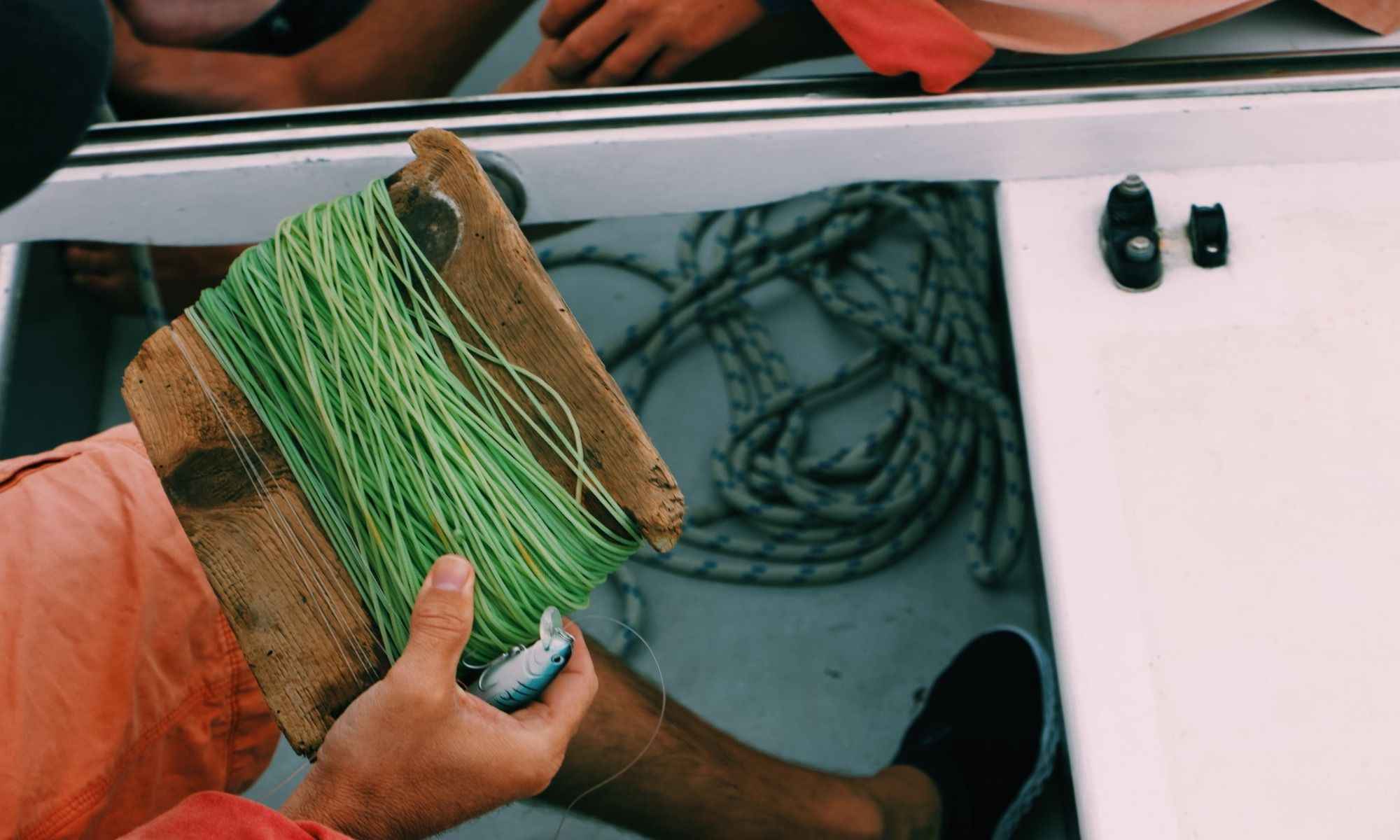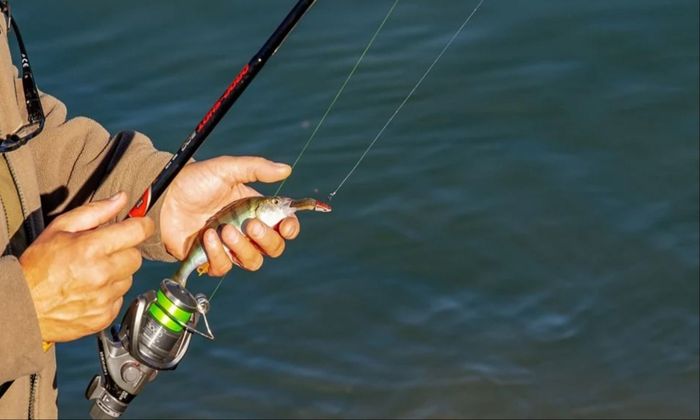How to Choose the Proper Fishing Line for Your Technique
Whatever your technique is, there is a fishing line that's right for you. Here are details of the monofilament, fluorocarbon, and braided lines.

Your fishing line is the most important piece of fishing gear you may have following the rod itself as it provides a connection between you and your catch. Anglers have different types of lines they can access and use with hundreds of brands, types, sizes, properties, diameters and strengths (weight properties by pound) to choose from. Though fishing lines can be subdivided according to their uses or applications to certain types of fishing, each type has specific assets that enable anglers to achieve diverse goals in their sport.
Fundamentally, anglers today utilize the three major types of fishing line: monofilament, braid and fluorocarbon. Each type has its advantages and disadvantages so you are able to find one that suits your needs to get the best results.
Monofilament Line
The monofilament line is the best multi-purpose line. It has been the standard and most popular line anglers have been using for over half a century. It is made from nylon and is one long continuous filament.

Advantages
- Monofilament lines come in a great variety of strengths and colors, which can help improve visibility above the water while keeping it unseen for fish underwater.
- It is the more affordable option of the three major types of lines but still offers excellent value despite it being less expensive.
- It can stretch under pressure so it can be very forgiving when you are catching bigger fish. This makes it able to absorb shocks, be abrasion resistant, and be evenly round in cross section, so it can be spooled neatly.
- It is easier to tie knots using this line compared to the others and it also cuts more cleanly.
- It casts light lures like crankbait or stickbaits with spinning gear effortlessly, plus it is easy to handle when rigging hooks, swivels, snaps and sinkers.
- The line’s buoyancy makes it a good choice for topwater fishing implementations including deep-jigging and live baitcasting.
- Monofilament is the preferred line for saltwater fishing as well as bass fishing.
Disadvantages
- The monofilament line has notable stretch, which can be a strong point for some fishing and anglers, but makes loss for lure ‘feel’ resulting in having difficulties in detecting light strikes.
- The line twists, which can cause several casting and retrieving issues. It can cause a problem with trolling lures due to their innate wiggle and wobble.
- For a given diameter, it’s not as strong, so with higher pound tests the line takes up more space around a spool.
- With monofilament being made out of nylon, it breaks down over time when exposed to sunlight. It is advised to respool with a fresh line every year.
- The line can suffer from ‘memory’ where it retains the shape of the loops or shapes made for it including when it’s spooled.
Braided Line
Braided lines are made up of multiple very strong, very thin fibers fabricated from material similar to that of Kevlar which are braided together to make a line that is essentially circular in cross section. This line has boosted its popularity status due to new improvements that have impacted its abrasion resistance, fine diameter per test, and casting characteristics.
Advantages
- Braided lines have low to no stretch, making it perfect for deep water fishing and for ‘feeling’ the slightest bite, bump and nudge. Because of this trait, it also has better hook-setting power.
- It is very strong, often twice as monofilament lines, so one can pack more on a spool.
- It sinks faster, trolls deeper, and is great for long-distance casts with surface lures. It is also ideal to use with spinnerbaits and lipless crankbaits on waters barriered by various weeds, plants, and other vegetation.
- The line has no memory so loops and twists won’t be an issue and makes it the best line for spinning reels.
- It doesn’t break down when exposed to sunlight, making it last longer than monofilament.
- The line does very well with heavy tests of up to over 80 pounds.
- Anglers like using this line for clear water fishing, bottom fishing, dock shooting, flipping jigs, and crankbait trolling.
Disadvantages
- Braided lines are more expensive and less abrasion-resistant than monofilament.
- It can be hard to tie knots with as it’s very slippery and has low friction.
- It is very difficult to cut so very sharp scissors or clippers are needed to trim it.
- Using the line can make handling casts under 10 pounds very difficult due to its fine diameter.
- The terminal end might need to be compensated with other types of lines as they can be visible to fish.
- It comes in many colors but it’s not see-through.
- Though the line having no stretch is an asset, it also means there’s no give when a fish strikes. Using less drag and having more finesse when setting the hook is advised.
Fluorocarbon Line

Fluorocarbon lines are relatively newer and are constantly being improved significantly over the years. It has also become cheaper since it came out. The line is mostly used as leader material but there are now brands selling it as a main line.
Advantage
- Fluorocarbon lines are extruded in a single strand like monofilament lines but are virtually invisible even in really clear waters because light passes through it. Anglers can use it for heavier pound tests because of this.
- It has less stretch than monofilament lines but more elastic than braided lines, making it great for practical fishing and improves one’s chances for a better hook up.
- This line doesn’t absorb water like monofilament lines do.
- It’s the best line when you use lures that require plenty of feel such as live baits like worms, jigs and Carolina-rigged baits.
- The line is good for deep-diving crankbaits because it’s ability to sink enhances the depth of your lures. It even has better backlash for heavier catches.
- Is good for either freshwater or saltwater fishing especially when used for fly fishing, baitcasting, trolling and tackle fishing. Anglers also like using this line when fishing during the winter due to its feel.
- Can be used with other lines and perfectly complements a braided line.
Disadvantages
- Fluorocarbon lines are stiffer compared to the other two lines, making it hard to tie knots with and hard to spool around the spinning reel.
- It’s not good for surface lures as it sinks faster than monofilament lines.
Other Types of Fishing Lines
1.Wire fishing lines are used as leader material as well, mainly for fishing toothy fish. There are single strand and braided varieties and it requires special hardened spools for reels. It’s popularly used for trolling and deep water fishing.
2. Fly fishing lines come in particular weights which reference the heaviness of the line and not its strength. They need to be matched up with fly rods. It attaches to a leader called a tippet that comes in varying breaking strengths.
3. Thermal filament lines are high-performance lines formed by the thermal bonding of small fibers. It has a smaller diameter per pound test compared to monofilament. This line is less readily available and more expensive.
Dacron, Spectra and Dyneema are other types of material aside from nylon that are used to make fishing lines. Dacron is a long-chain polyester and is better in its strength, flexibility and low stretch than nylon. Spectra and Dyneema are ultra-strong polyethylene fiber used for high-tech fishing lines which are stronger than steel and more durable than polyester.





